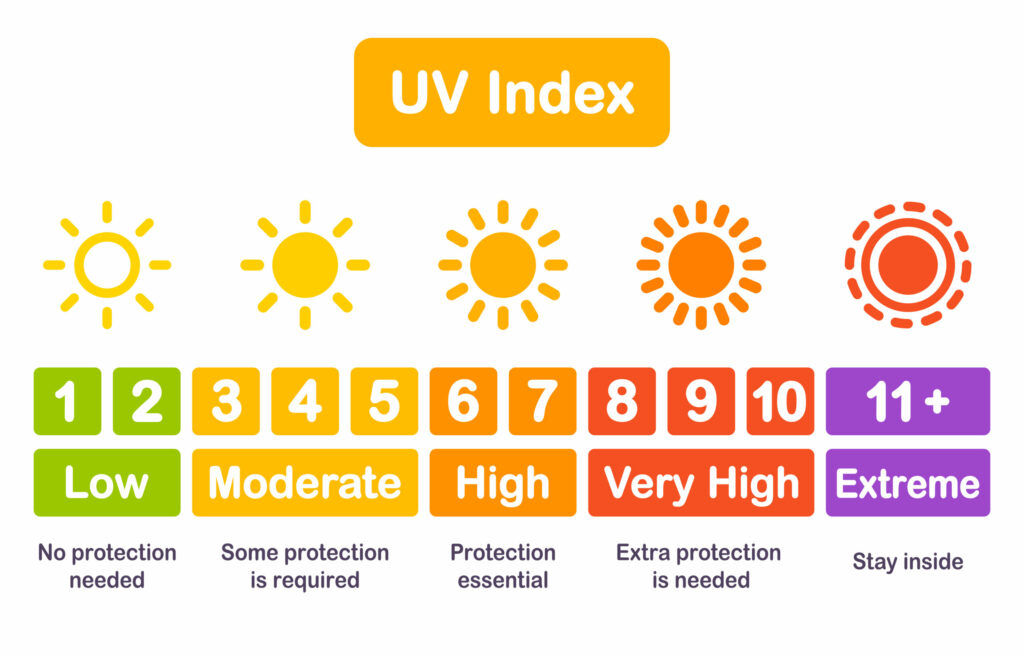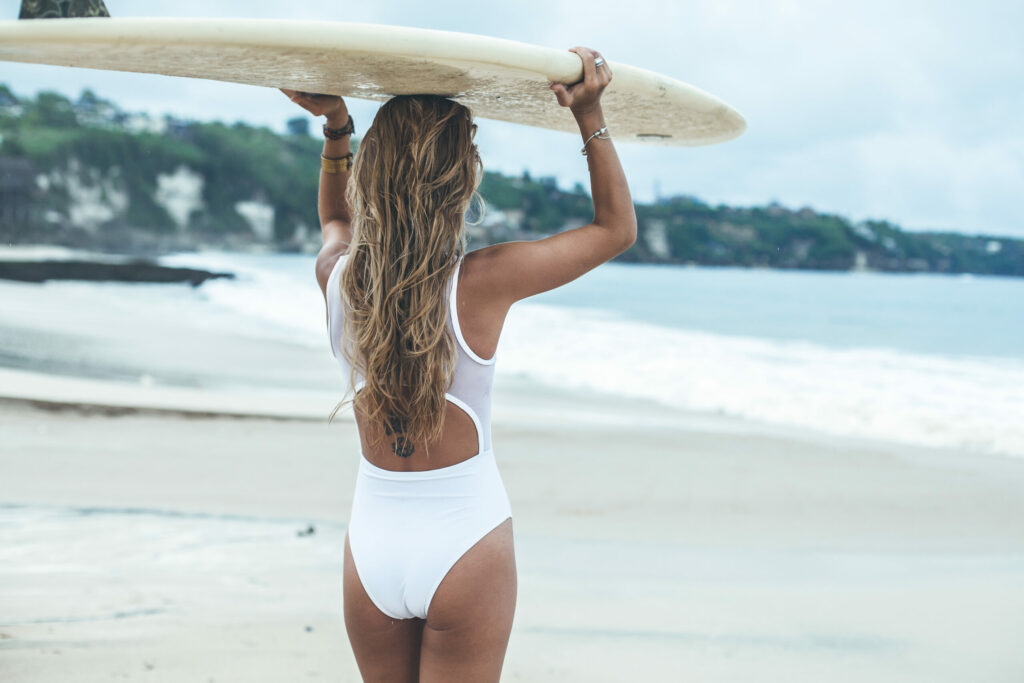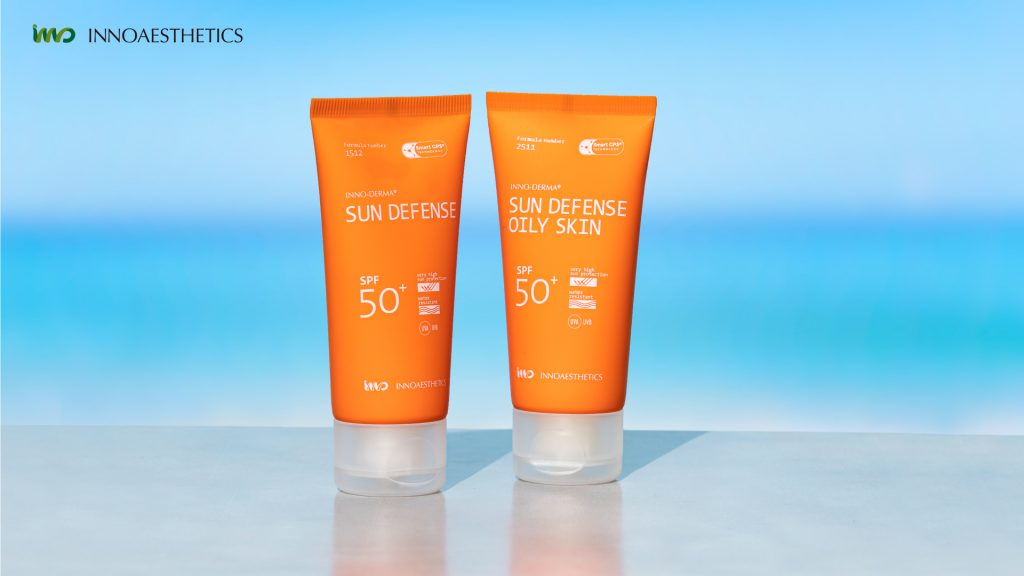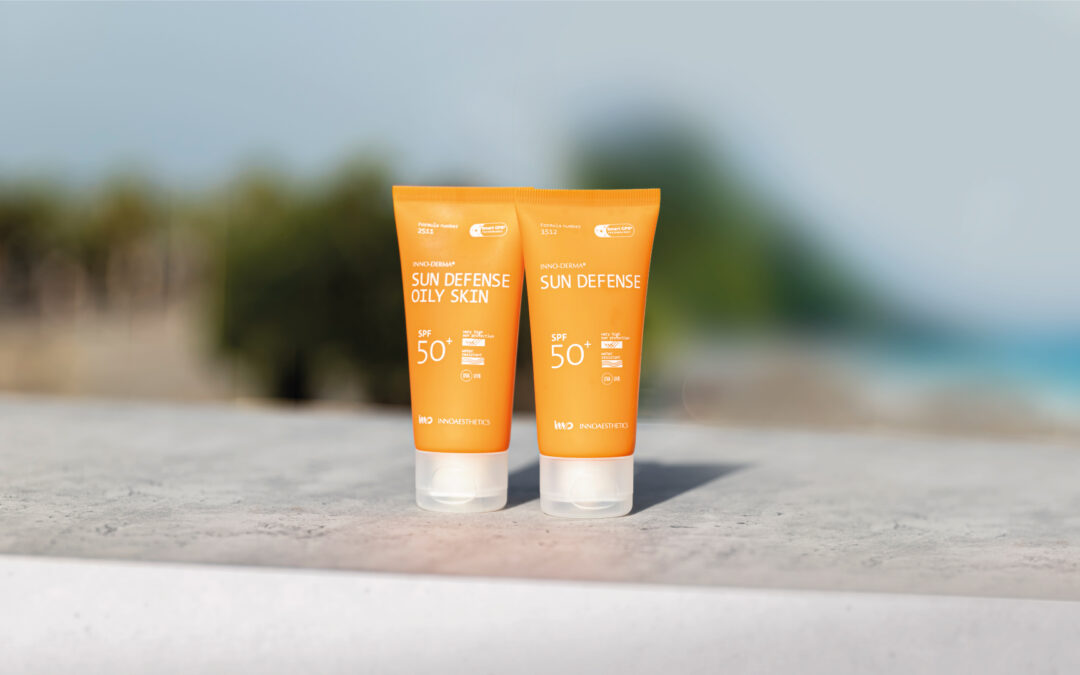Now that summer is here, you are probably spending more time outdoors and using a great amount of sunscreen. But have you ever wondered what is the science behind sunscreens, how they work, and how to ensure their effectiveness?
It is crucial to understand that your skin can only protect you from sun damage for a short period of time, and that the increased UV index that we are lately experiencing makes using a broad-spectrum sunscreen a must, not only during the summer months but all year round.
Moreover, protecting your skin from the sun is undoubtedly the best way to prevent skin aging.
In this article, we will provide an insight into three main factors you should consider before choosing your sunscreen:
- UV index: How strong is UVR out there?
- How much can your skin naturally protect you from sun damage.
- Making sure you use a broad-spectrum sunscreen.
1. UV INDEX: HOW STRONG ARE THE UVR OUT THERE?
The UV index is a scale that measures how strong are UVR on a given day.
This index is an important tool to help you understand how intense the sun rays are and how likely they are to harm your skin.
This scale is rated between 1 to 11 or more, and it varies throughout a day, being usually stronger from 11h to 16h, depending on the location.
On days with a high UV index, you should extreme precautions seeking shade, wearing protective clothes, using sunscreen, and avoiding the strongest hours.

Nowadays, there are apps that tell you what is the UV index in your location by only looking in your phone.
2. HOW MUCH CAN YOUR SKIN NATURALLY PROTECT YOU FROM SUN DAMAGE?
Before learning how a sunscreen efficacy is tested, let’s understand your skin natural protective mechanisms against the sun. Your skin can shield you from sun damage for a certain amount of time. This amount of time varies from person to person and is mainly determined by the skin phototype.
The skin protective system works through the production of melanin, a pigment responsible for the color of your skin, hair, and eyes. Melanin acts as a shield that both scatters and absorbs UVR, reducing their penetration through the epidermis.
There are two types of melanin: eumelanin (the dark one), and pheomelanin (yellowish). Eumelanin is more effective in protecting the skin from UVR.
People with more pheomelanin than eumelanin are typically phototypes from I to III on the Fitzpatrick scale, making their skin more prone to sunburn. In such cases, it is essential to use high SPF sunscreen, even when the UV index is low. Conversely, individuals who produce more eumelanin have stronger natural protection against UVR, resulting in a longer time before sunburn occurs (still considering the UV index). However, even individuals with darker skin tones should also use sunscreen to ensure comprehensive protection. To know what your skin phototype is, you can read our article how to determine your skin phototype.
3. MAKING SURE YOU USE A BROAD-SPECTRUM SUNSCREEN.
When using a sunscreen, make sure it is broad-spectrum. It means it protects against UVA and UVB rays. Sunscreens are normally tested in terms of SPF (Sun Protection Factor) and water resistance. But, how are these tests conducted?
SPF TESTING
SPF test measures the level of protection provided by a sunscreen.
To perform this test, the study records how long it takes for a participant to sunburn without wearing sunscreen. Then, they measure how long the same participant takes to sunburn after applying the sunscreen. If the participant skin would sunburn after 10 minutes, SPF 15 would protect you for 15 times longer, SPF 30, 30 times longer, and so on. Of course, the study is not performed on one person but on several participants.
It is important to note that despite the testing is performed in terms of time, SPF numbers doesn’t indicate how long the protection last, but the level of protection provided. A SPF 15 sunscreen will block roughly 93% of UV rays, only if applied thoroughly, while SPF 30 will block 97% and SPF 50 98%. Therefore, SPF 50 is always the best option, and a must if the UV index is high or your skin phototype is under III.
Also keep in mind that dermatologists recommend re-applying sunscreen every two hours or after swimming or towelling as sunscreen can wear off by friction, sweat, or water (even if it is water resistant).
WATER RESISTANCE TESTING
This test determines how long your sunscreen will remain effective after being exposed to water. This is particularly important if you plan to swim or engage with water activities.
Nevertheless, remember to re-apply sunscreen always after water-based activities because, even if water resistant, they always lose effectiveness to a certain degree when water exposed.

In conclusion, choosing the right sunscreen involves considering the UV index, understanding your skin’s natural protection, and selecting a broad-spectrum sunscreen with a suitable SPF and water resistance level. By taking all these factors into account, you can enjoy the sun safely and protect your skin from potential damage and premature skin aging.



